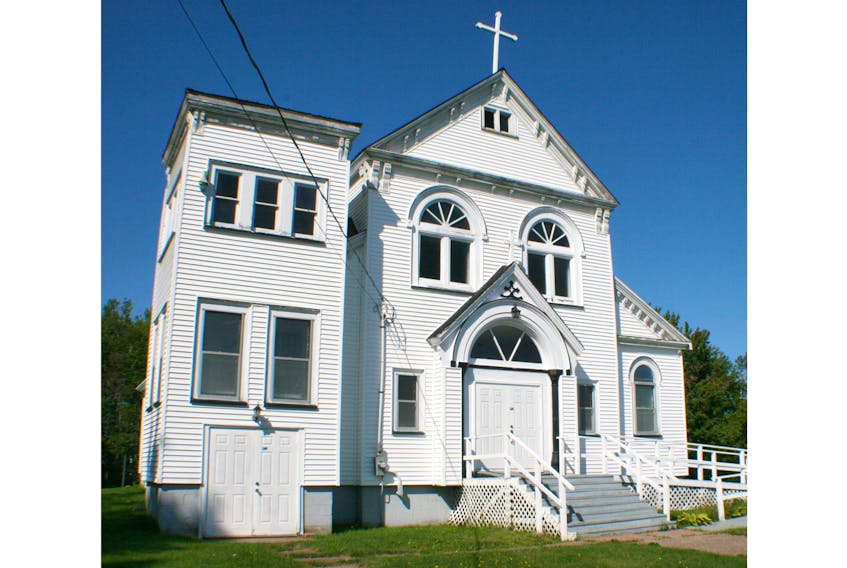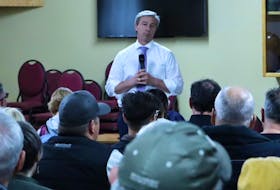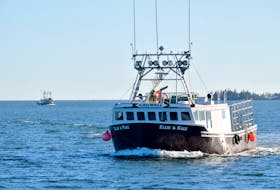MELROSE, N.B. – Its long and vibrant history first took root around 1820 with the migration of some 60 families to the Melrose area – in those early days called the ‘Emigrant Road.’
The congregation of St. Bartholomew’s Roman Catholic Church first came together around that time; the descendants of many of those early family names, including Carroll, Burns, Savage, Noonan, Lane, Murphy, Gallant, Stack, Sweeney, Joyce, Murray, Doucette, Houlahan are still living in the region.
The original church building, constructed under the direction of the first clergyman Rev. John Cummis, was a humble log cabin built on the farm of pioneer John Roach and located at the exact site of the present St. Bartholomew’s cemetery, across the road from the present-day church. A large, wooden cross and monument were erected at the site some years later by Rev. Edward Savage, a direct descendant of one of the first settlers, in remembrance of the early pioneers buried there.
After holding masses at the log church, several years later it was destroyed by fire and for about 10 years services were held at the home of James Carroll until another wooden structure was built, also on the site of the present cemetery. More and more settlers migrated to the area and continued to worship there for about 60 years. In 1902 a new, ornate edifice was built and blessed by the late Rev. Arthur Meahan a year later, and it is in this church that its congregation have had their spiritual home for about 116 years.
Until 1907 the church unit was a mission that depended on the larger church in Cap-Pelé, but it later instead became attached to Middle Sackville. This remained so until 2000, at which time, as part of the restructuring of the diocese, both St. Bartholomew’s and its sister church, St. Clement’s in Port Elgin, became part of the St. Bernard’s (Moncton) and St. Vincent (Sackville) Pastoral Unit within the Archdiocese of Moncton. In 2003 the church congregation celebrated its 100th anniversary with a special service and reception.

The church building has undergone some changes over the years including being moved back to enable the widening of Highway 16 which runs between the church and the cemetery; and the loss of the church steeple. But the church congregation continued to grow; in 1926 it comprised some 246 dedicated folks.
Through the years those numbers gradually decreased as members passed away or moved to other locales. But in spite of the decline, the church family continued to work hard to maintain its vibrant role in community life. Many events and activities took place within the hallowed walls of the edifice and the church hall located beneath it; including festive celebrations, variety shows, bazaars, card parties, basket socials and the event for which St. Bartholomew’s has become well-known, large church suppers. In fact, those first events took the form of goose suppers which began in the 1920s – drawing people from as far away as Moncton and Saint John – and continued until the 1950s. Resurrected in 1974 as turkey suppers, the annual event continued until around 2000, still attracting hundreds of folks to the now-infamous annual social event.
As church numbers declined, St. Bartholomew’s and its sister church, St. Clement’s, joined together to share services, rotating masses and liturgies between both churches on a weekly basis.
And despite the hard work and dedication of church members in keeping the church going, declining numbers eventually made it impossible to keep the doors open and the diocese announced earlier this year that the church would close. Members will continue to share worship at St. Clement’s church in Port Elgin.
The final church service and mass was held at St. Bartholomew’s church on Sunday afternoon, Sept. 16 with Father Allison Carroll officiating, assisted by Rev. Charles Broderick. A large number of past and present members joined other local residents and friends of the church to say a formal ‘goodbye’ to St. Bartholomew’s. The church remains the property of the Roman Catholic Archdiocese of Moncton, who will ultimately determine the future of the building.
Many helping hands make light work
Con Rommens has been a member of the St. Bartholomew’s church since he was a small child.
He and his wife Rose recently recalled the efforts of members to keep their beloved church going, as well as the many changes in the church that have taken place throughout the years.
“The turkey suppers were huge events; so much work, but everyone worked together. Usually we served about 600-700 people so it raised a lot for the church,” Con said.
Rose recalled working in the church kitchen for hours, her infant son stowed under the counter, snoozing in his baby seat.
“Everyone just came to help, whether you had young children at home or not. You had to have everyone’s help to do all of the work involved in such a big event,” she said.
Con recalled one of the biggest changes in the church was the switching from Latin to the English language in the mid 1960s.









